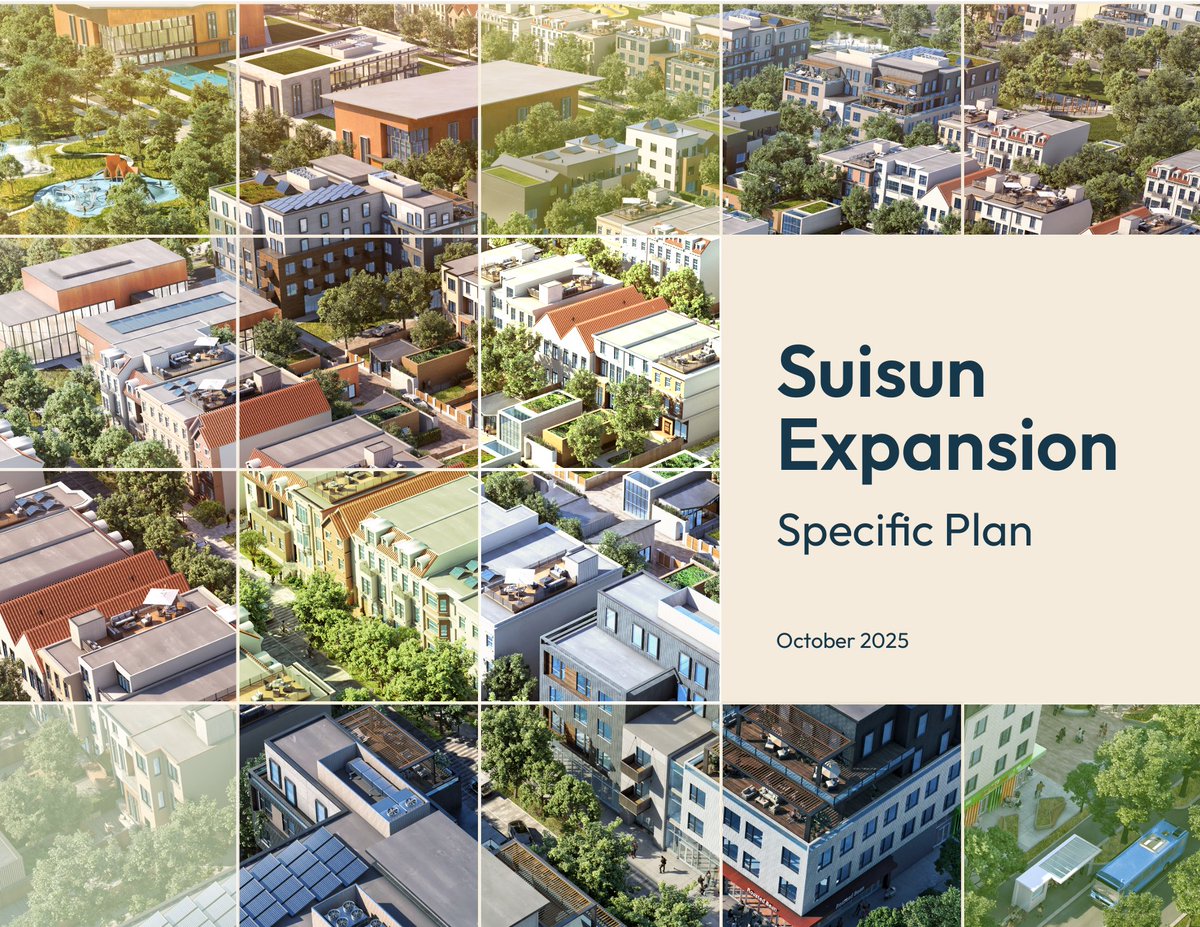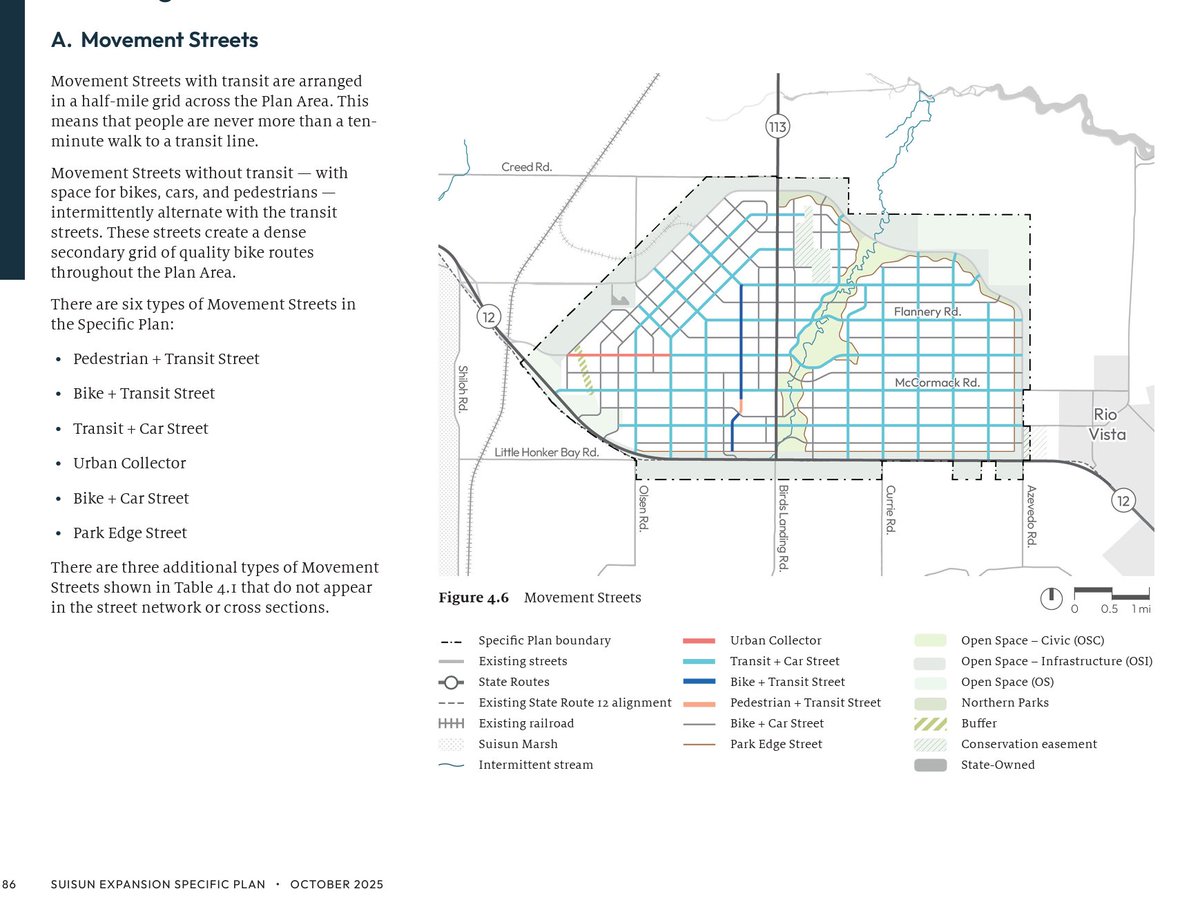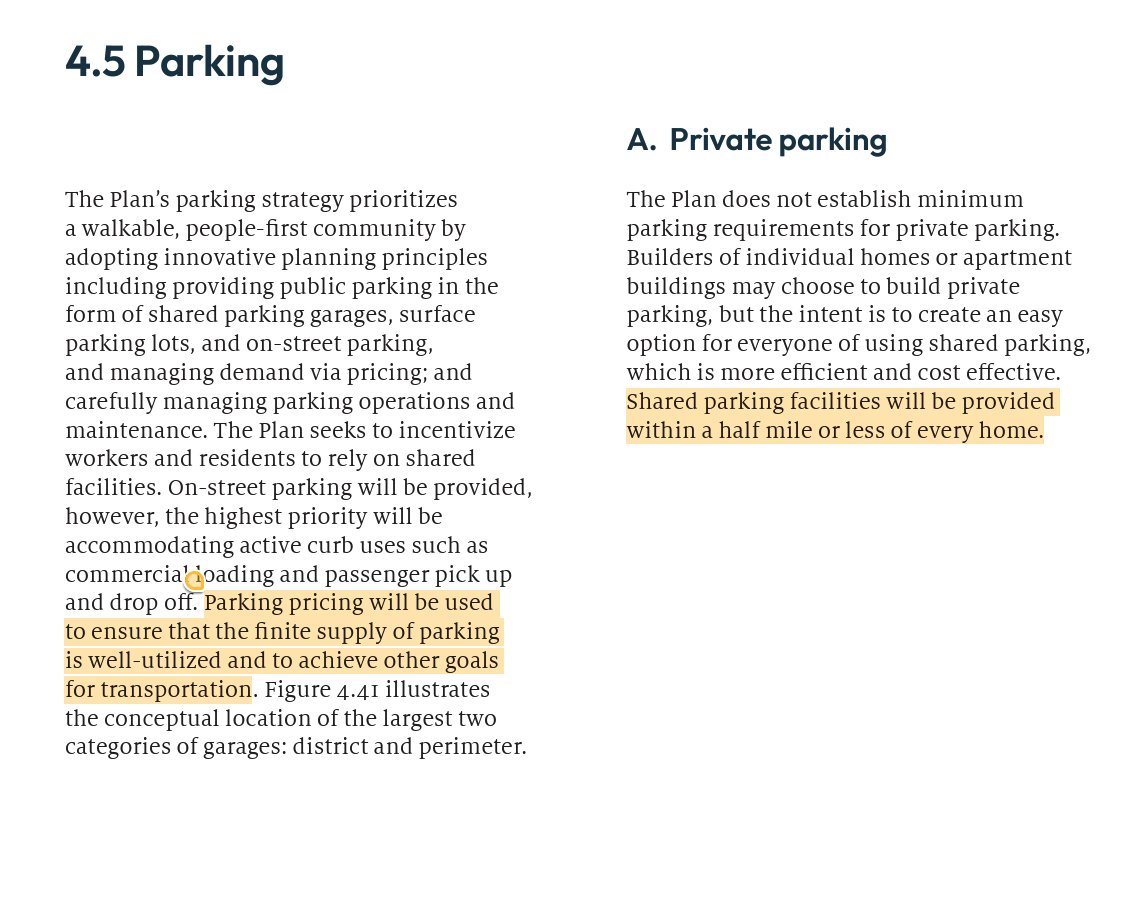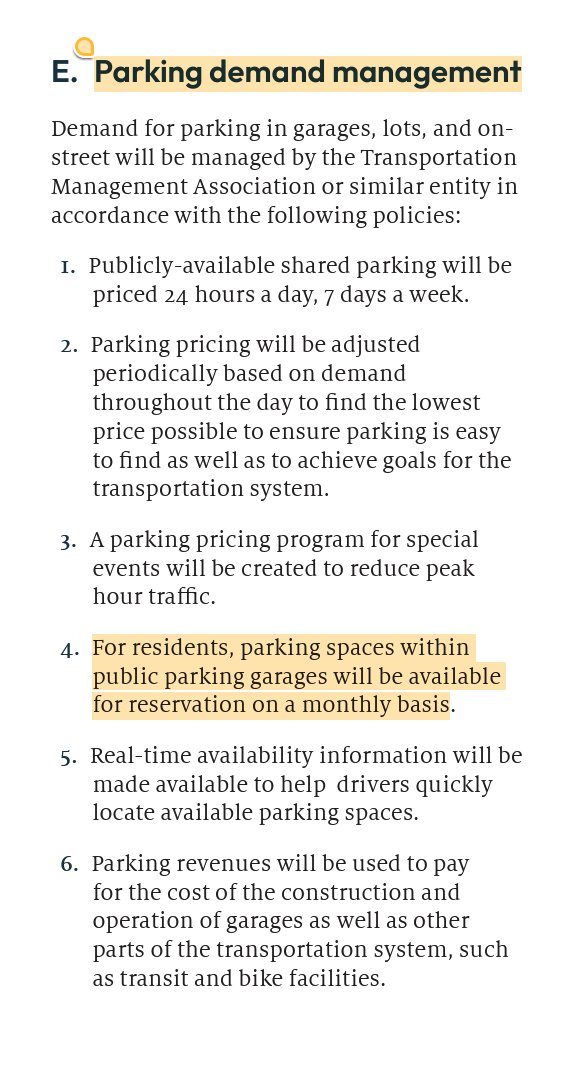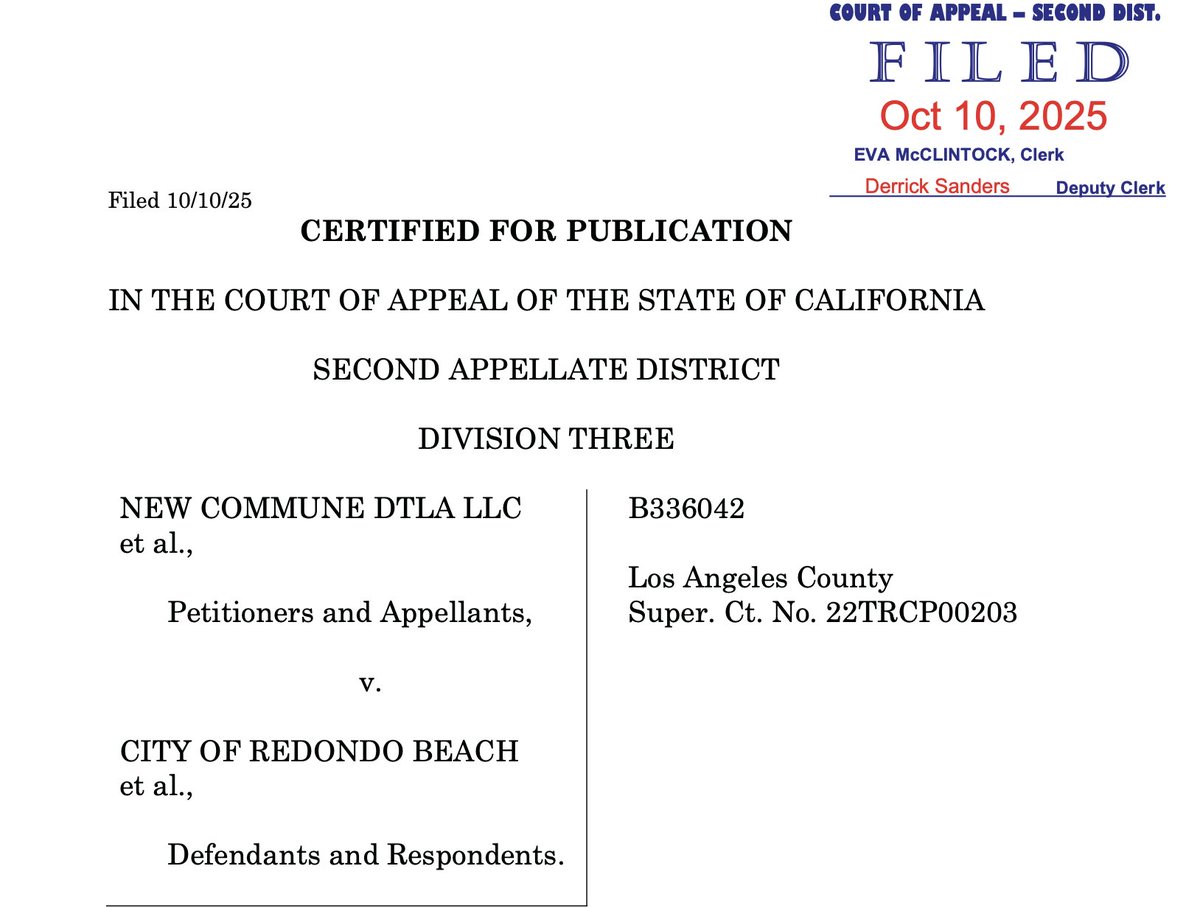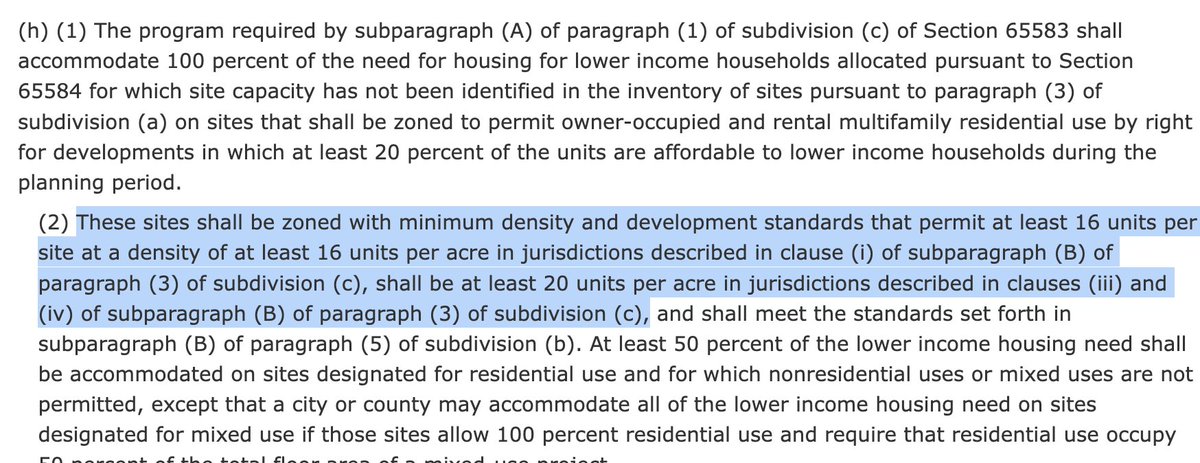New CEQA opinion nixing (again!) the voters' repeal of a 30' height limit in San Diego is a near-perfect vehicle for CA Supreme Court to jettison the worst of "Old CEQA."
Very glad that @MayorToddGloria is determined to appeal it.
🧵


Very glad that @MayorToddGloria is determined to appeal it.
🧵
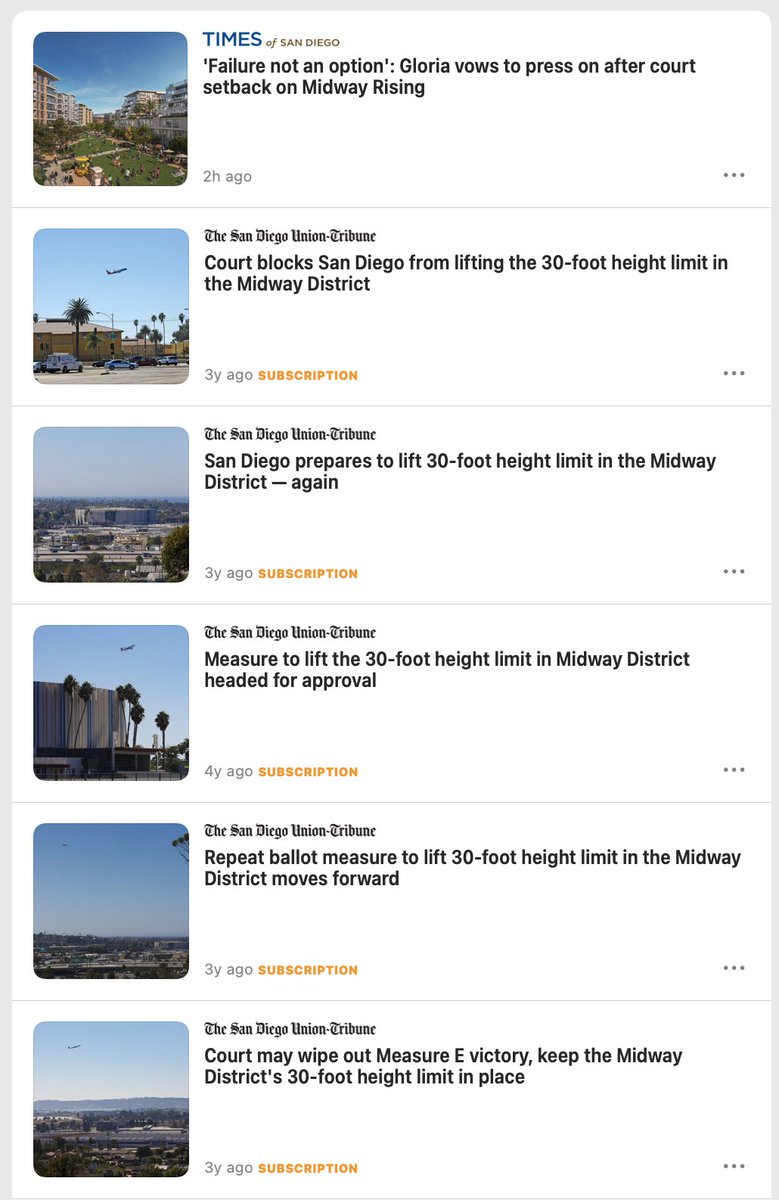


Background:
- In 1972, the voters capped heights at 30' "to prevent[] high-rise buildings from obstructing 'needed open breezes, sky & sunshine,'" and to "protect[] against unwanted population density with its problems of ... lack of parking space, increased crime[, etc.]"
/2
- In 1972, the voters capped heights at 30' "to prevent[] high-rise buildings from obstructing 'needed open breezes, sky & sunshine,'" and to "protect[] against unwanted population density with its problems of ... lack of parking space, increased crime[, etc.]"
/2
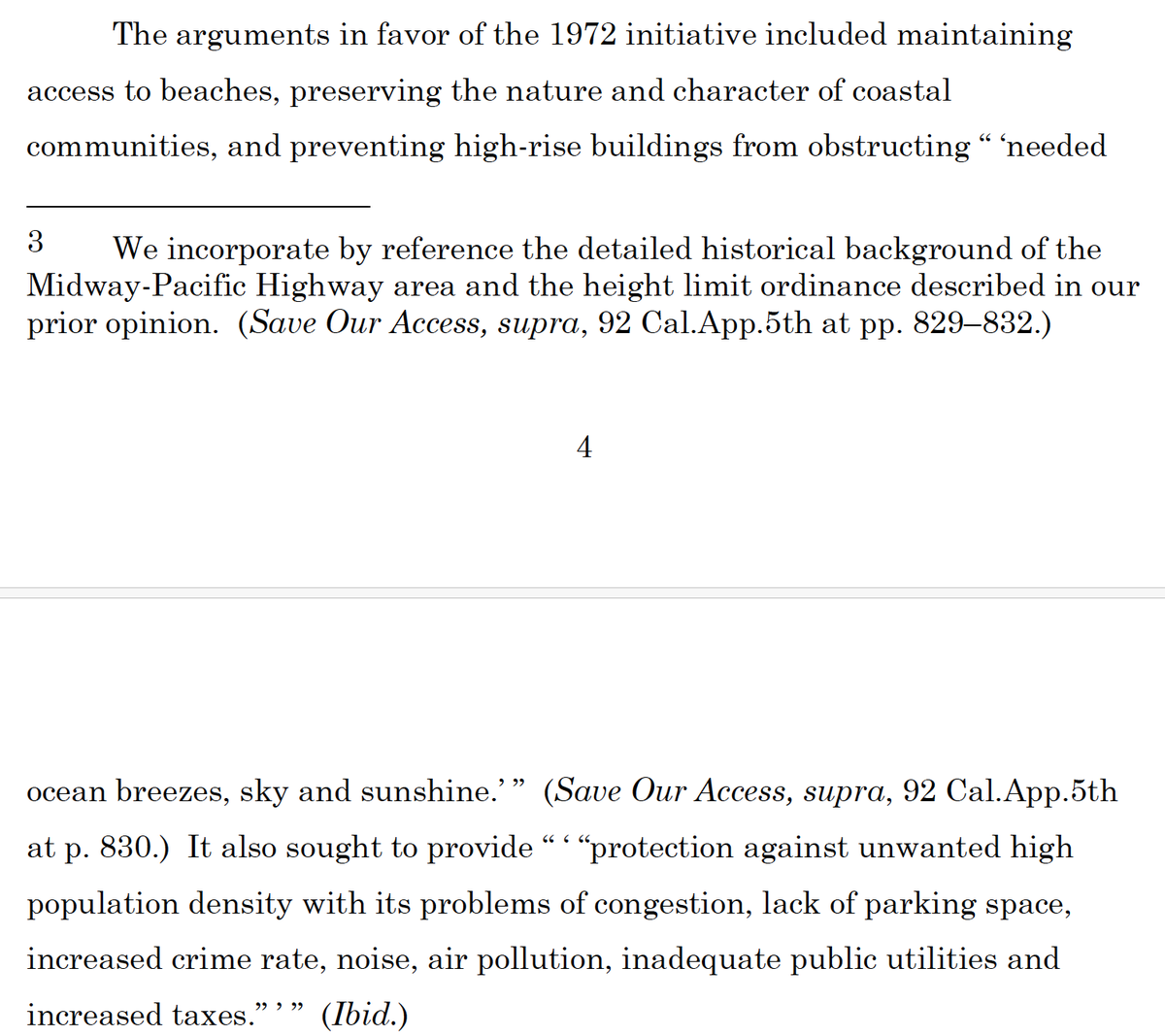
- the 1972 San Diego ballot measure defined "coastal zone" to include not only environmentally sensitive area, but also a big swath of industrially zoned land b/t the freeways
/3

/3
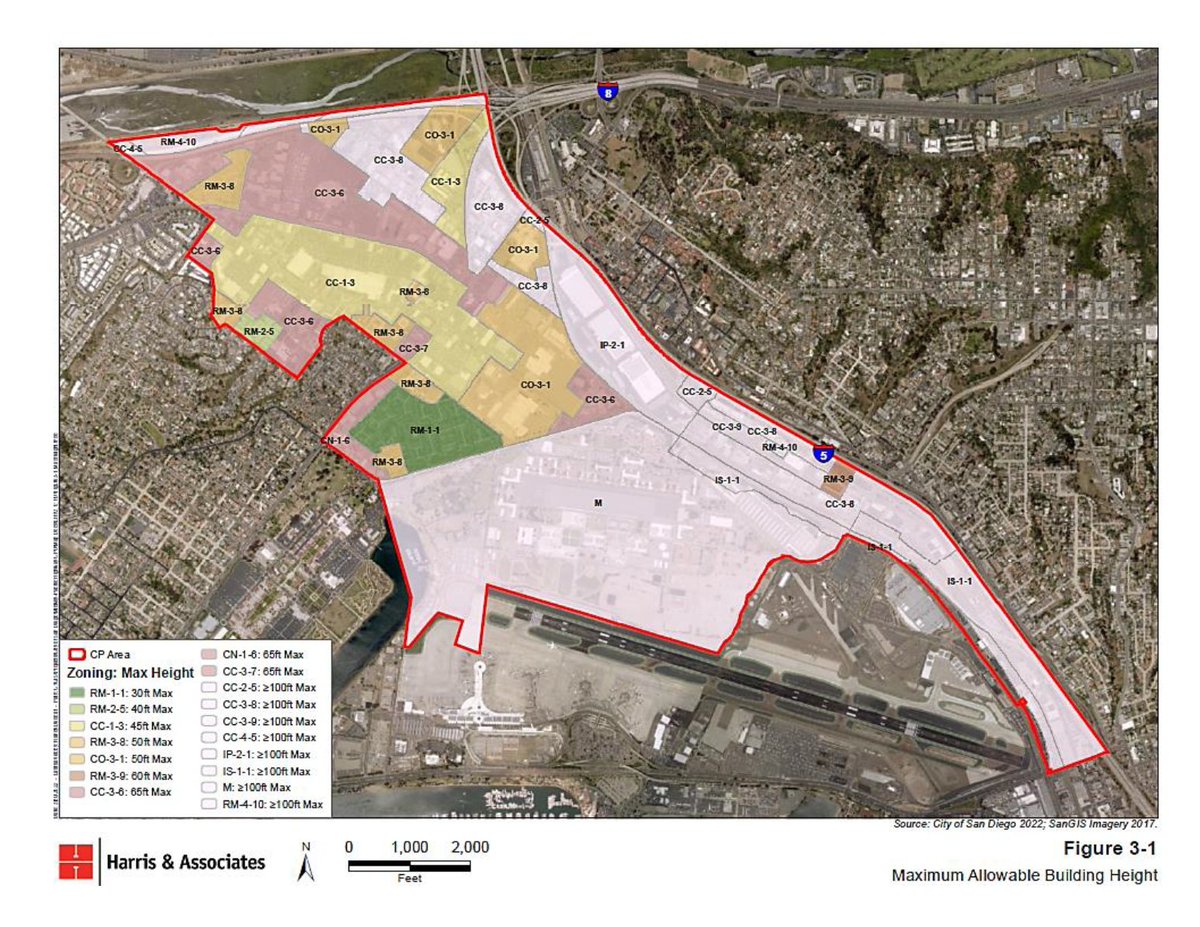
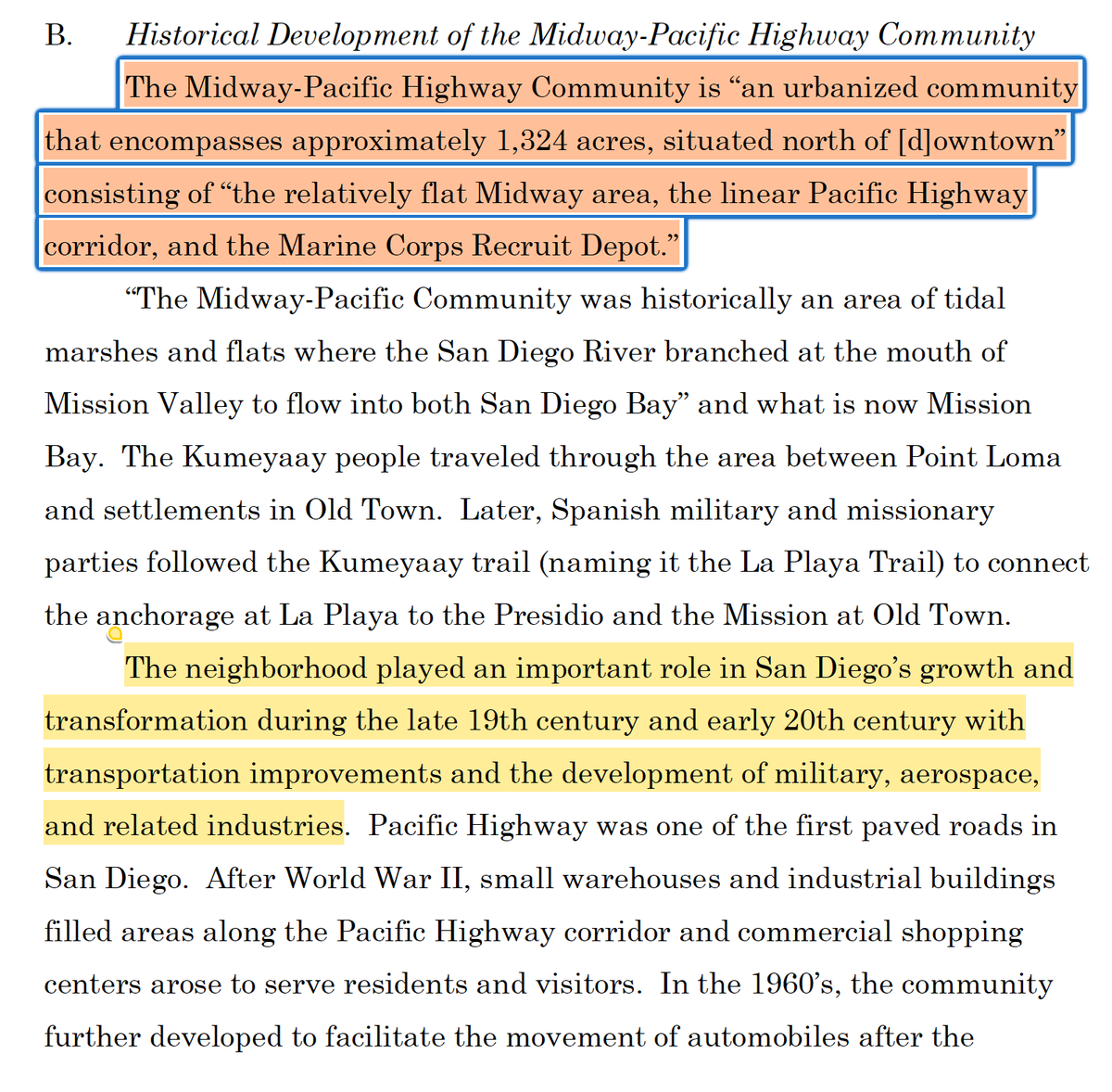
- in 2008, the city initiated a rezoning of that industrial area, the "Midway-Pacific Highway Community"
- 10 years later, San Diego passed this rezoning, aiming to convert the wasteland into a network of "urban villages," pedestrian and bike streets, & green space
/4
- 10 years later, San Diego passed this rezoning, aiming to convert the wasteland into a network of "urban villages," pedestrian and bike streets, & green space
/4

- the rezoning used standard zoning classifications from city's municipal code (which allow heights much greater than 30'), but it did not purport to supersede the 1972 ballot measure
- in 2020, city council heard args for & against repeal of height limit, & put it on ballot
/5
- in 2020, city council heard args for & against repeal of height limit, & put it on ballot
/5
- city did not prepare a supplemental EIR for the height-limit repeal, reasoning that repeal would not authorize a denser buildout than the rezoning & general plan already allowed (and which had been analyzed in the 2018 programmatic EIR for the rezoning & GP update)
/6
/6

- NIMBYs sued under CEQA. They won. Court faulted city for not analyzing, inter alia, the visual impact of taller buildings.
As if writing for future historians, the Court of Appeal actually reprinted in its published opinion a photo taken from the plaintiff's backyard ⤵️.
/7
As if writing for future historians, the Court of Appeal actually reprinted in its published opinion a photo taken from the plaintiff's backyard ⤵️.
/7

The will of the city's voters had been thwarted by CEQA.
Not to be deterred, city planners prepared a supplemental EIR and ballot measure.
The SEIR analyzed visual & neighborhood character impacts, reasoning that other potential impacts were covered by 2018 program EIR.
/8
Not to be deterred, city planners prepared a supplemental EIR and ballot measure.
The SEIR analyzed visual & neighborhood character impacts, reasoning that other potential impacts were covered by 2018 program EIR.
/8

Again, the voters repealed the 30' height limit, and again, the same NIMBY group sued.
Plaintiff said supplemental EIR (SEIR) should have examined potential impacts of taller buildings on water, air, GHG emissions, seismic risk, and more.
/9
Plaintiff said supplemental EIR (SEIR) should have examined potential impacts of taller buildings on water, air, GHG emissions, seismic risk, and more.
/9
And again, the Court of Appeal rejected the city's CEQA analysis, nullifying the voters' second repeal of the height limit.
/10
/10
Court said SEIR was inadequate b/c it didn't fully analyze:
- possibility that taller buildings in the area would diffract or reflect soundwaves differently than 30' buildings
/11



- possibility that taller buildings in the area would diffract or reflect soundwaves differently than 30' buildings
/11




- possibility of more "noise and vibration" from construction activities, if buildings were taller than 30', which standard mitigation measures might not adequately mitigate
/12
/12

- possibility that air quality could be differently affected, b/c taller buildings could "interact with air flow and atmospheric conditions"
/13
/13

- possibility that taller buildings could have greater impact during construction (if they take longer to build), or require more electricity for their HVAC systems, which in turn could increase GHG emissions per plaintiffs' "expert"
/14
/14

- possibility that taller buildings could affect wildlife thru reflected noise or light, increased runoff, or new nesting habitat for peregrine falcons (!)
/15
/15

- possibility of "cumulative impacts" on groundwater hydrology from foundations required for taller buildings
/16
/16

The court described these as "a few non-exhaustive examples" of impacts the SEIR should have addressed.
The message to San Diego: Unless you address in exhaustive detail every single potential impact that I (judge) might conjure up in my *next opinion,* you're out of luck.
/17
The message to San Diego: Unless you address in exhaustive detail every single potential impact that I (judge) might conjure up in my *next opinion,* you're out of luck.
/17
Tellingly, the court opened its analysis with pictures.
(notwithstanding that the court did not fault the SEIR's analysis of visual or n'hood character impacts)
The pictures communicate, as the court put it, the "significance" of the height-limit change.
/18



(notwithstanding that the court did not fault the SEIR's analysis of visual or n'hood character impacts)
The pictures communicate, as the court put it, the "significance" of the height-limit change.
/18




Now let me explain what's wrong with this opinion, legally.
First, court said that "recent legislative changes" to CEQA have no bearing on its analysis, b/c they're "focused on obligations agencies must undertake regarding individual projects."
Wrong!
/19
First, court said that "recent legislative changes" to CEQA have no bearing on its analysis, b/c they're "focused on obligations agencies must undertake regarding individual projects."
Wrong!
/19

SB 131 (@Scott_Wiener's budget trailer bill) includes highly relevant legislative findings, a new distinction b/t CEQA for "natural and protected lands" vs. other lands, simplification of admin record, & a CEQA exemption for housing-element rezonings.
/20
/20

SB 79 (2025), AB 2011 (2022) & SB 10 (2022) manifest a legislative willingness to upzone -- and to allow cities to upzone -- existing urbanized area w/o CEQA review.
Local flexibility & implementation ordinances under all 3 bills are "not a project" for CEQA purposes.
/21
Local flexibility & implementation ordinances under all 3 bills are "not a project" for CEQA purposes.
/21
Courts have long said that "common sense" and the "rule of reason" guide CEQA's application.
The judiciary's "rule of reason" ought to be informed by the Legislature's recent practice.
/22law.justia.com/cases/californ…
The judiciary's "rule of reason" ought to be informed by the Legislature's recent practice.
/22law.justia.com/cases/californ…
In light of that practice, judicial nitpicking of San Diego's decision to focus the SEIR on views & neighborhood-character is uncommonly nonsensical.
(The court acknowledged that removal of height limit doesn't alter aggregate density, just its shape.)
/23
(The court acknowledged that removal of height limit doesn't alter aggregate density, just its shape.)
/23
This opinion also illustrates how thoroughly the CA Supreme Court's decision to review de novo the thoroughness an EIR's discussion of enviro impacts has messed up CEQA.
(The seminal screwups were Laurel Heights I & Sierra Club v. County of Fresno.)
/24

(The seminal screwups were Laurel Heights I & Sierra Club v. County of Fresno.)
/24


It also illustrates a total disregard for CEQA's explicit instruction that courts set aside an agency's decision only if the agency committed a *prejudicial* abuse of discretion.
/25
/25

As to the first point: de novo review of "thoroughness of discussion" has, in this case, collapsed the distinction b/t the "fair argument" standard for judicial review of decision not to prepare an EIR, and deferential "substantial evidence" standard for review of EIR.
/26
/26
Look at the screenshots posted up-thread. The court establishes that "more discussion" of ostensible impacts was necessary by ***posing hypothetical questions.***
That's fair-argument talk, i.e., "Could any reasonable person have a concern about potential impacts?"
/27
That's fair-argument talk, i.e., "Could any reasonable person have a concern about potential impacts?"
/27
It's not even normal "hard look" admin law, where court asks whether the agency adequately responded to significant comments.
There was a scoping process! The agency explained why it limited the SEIR to views & n'hood character. The public commented! The agency responded!
/28
There was a scoping process! The agency explained why it limited the SEIR to views & n'hood character. The public commented! The agency responded!
/28
It's wild that the court tossed the SEIR -- and with it the voters' second effort to repeal the height limit -- without grounding its analysis on agency's response to public comments received on the initial study & draft SEIR.
/29
/29
And even assuming that the agency messed up, how exactly was its mess up "prejudicial"?
The court doesn't say.
It just offers platitudes about reading CEQA to give "fullest possible" protection for env't and max info to public.
/30
The court doesn't say.
It just offers platitudes about reading CEQA to give "fullest possible" protection for env't and max info to public.
/30

But if the word "prejudicial" is not to be read out of the statute, plaintiffs should be expected to provide enough evidence of overlooked enviro impacts as to raise a serious question about whether decision would have been different if EIR had been done "right."
/end
/end
@threadreaderapp
@threadreaderapp unroll
• • •
Missing some Tweet in this thread? You can try to
force a refresh


